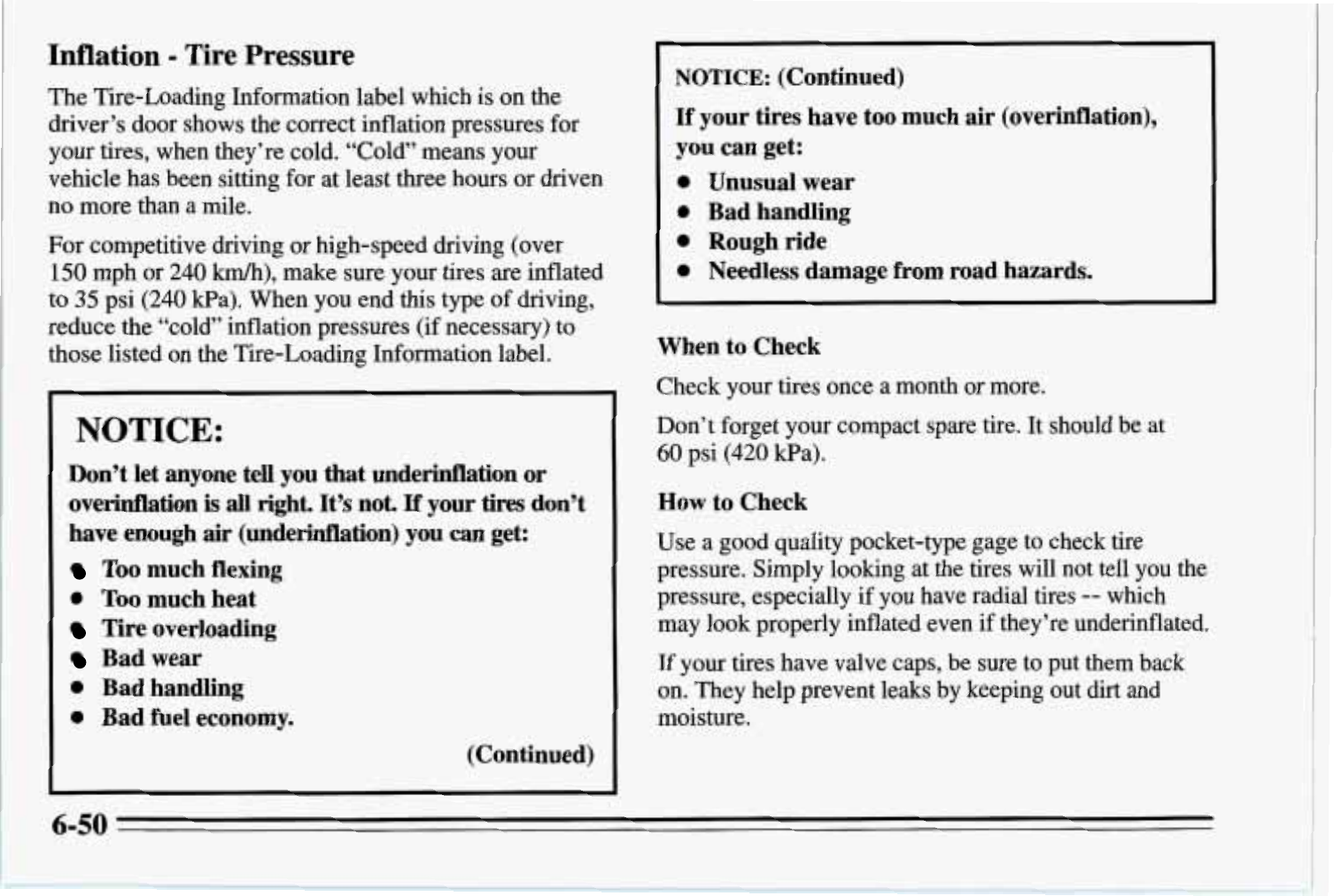
Inflation
-
Tire Pressure
The Tire-Loading Information label which is on the
driver’s door shows the correct inflation pressures for
your tires, when they’re cold. “Cold” means your
vehicle has been sitting for at least three hours or driven
no more than a mile.
For competitive driving or high-speed driving (over
150
mph or 240
km/h),
make sure your tires are inflated
to
35
psi (240 Wa). When you end this type of driving,
reduce the “cold” inflation pressures
(if
necessary) to
those listed on the Tire-Loading Information label.
I
I
NOTICE:
Don’t let anyone
tell
you that underinflation or
overidation is
all
right.
It’s
not.
If
your
tires
don’t
have enough
air
(underinflation) you
can
get:
Too much flexing
0
Too much heat
Tire overloading
Bad wear
0
Bad handling
0
Bad fuel economy.
(Continued)
I
I
I
NOTICE:
(Continued)
If
your tires have too much air (overinflation),
you can get:
0
Unusual wear
0
Bad handling
0
Rough ride
0
Needless damage from road hazards.
1
When to Check
Check your tires once a month or more.
Don’t forget your compact spare tire. It should be at
60
psi (420 Wa).
How
to Check
Use a good quality pocket-type gage to check tire
pressure. Simply looking at the tires will not tell you the
pressure, especially if you have radial tires
--
which
may look properly inflated even if they’re underinflated.
If
your tires have valve caps, be sure
to
put them back
on. They help prevent leaks by keeping out dirt and
moisture.
6-50


















